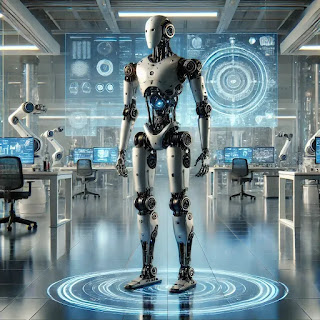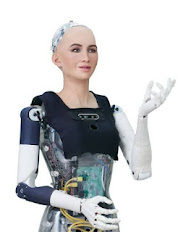Hyundai Motor Company (KRX:005380 / OTC: HYMTF) is increasingly attractive as an investment, especially if you're seeking exposure to the convergence of robotics, electric vehicles (EVs), and autonomous driving. Here's a breakdown of why Hyundai may be a solid investment right now, based on current dynamics:
✅ Bull Case for Hyundai – July 2025
1. Boston Dynamics Integration = Unique Robotics Edge
-
Hyundai is one of the only global automakers with full control over a top-tier robotics firm.
-
Use of Spot, Stretch, and soon Atlas robots in factories, logistics, and inspection gives Hyundai a first-mover advantage in smart manufacturing.
-
This enhances productivity, reduces downtime, and may accelerate AV system testing (e.g. physical AI, real-time perception).
“Tens of thousands” of robots will be deployed across Hyundai and Kia plants — that's not R&D; that’s operational transformation.
2. Strong EV Momentum
-
Hyundai’s Ioniq lineup is highly rated (Ioniq 5 and 6), competing well with Tesla on quality, design, and price.
-
Major EV production plants in Georgia (U.S.) are ramping up, giving Hyundai a serious foothold in North America.
-
Hyundai’s battery partnerships (SK On, LG Energy) strengthen its supply chain.
3. AV Partnerships & Strategy
-
Motional (joint venture with Aptiv) is testing Level 4 robotaxis in the U.S. using Hyundai EV platforms.
-
Integration of sensor fusion, real-time mapping, and AI navigation systems is being tested now — a strong sign of future readiness in the AV space.
4. Undervalued Compared to U.S. Peers
-
Hyundai trades at much lower valuation multiples than Tesla, GM, or even Ford:
-
P/E ratio often under 8–9x
-
Price-to-book well under 1.0
-
-
Despite growing global EV sales, its valuation doesn’t yet reflect the robotics + AI upside that Tesla is often credited with.
June total sales of hybrid vehicles jumped 3%, resulting in the best June ever for hybrid and total electrified vehicle sales.
Q2 and First Half Highlights
Hyundai sold 235,726 units in Q2, for a total sales increase of 10% compared with Q2 2024. Hyundai set total and retail sales records in Q2 for Elantra N, Santa Fe HEV, Tucson PHEV, Tucson HEV and Palisade. Hybrid vehicle sales for the quarter rose 16%.
Hyundai sold 439,280 total units in the first half of 2025, a 10% increase compared to the first half of 2024 and the best ever first half sales results. First half retail sales rose 5%. Total electrified vehicle sales saw an increase of 20% year-over-year.
5. Dividends & Global Growth
-
Hyundai pays a solid dividend (~2.5%–3% yield, depending on share class and FX).
-
It's expanding aggressively in India, Southeast Asia, and North America, growing both ICE and EV market share.
❌ Risks to Consider
| Risk | Details |
|---|---|
| Geopolitical exposure | Korea-based; vulnerable to tensions with North Korea, China, U.S. tariffs |
| Competitive landscape | Faces Tesla, BYD, VW, and new AV entrants like Apple or Xiaomi |
| AV timeline uncertainty | No firm timeline for fully commercial AV products |
| BD not yet monetized | Boston Dynamics is still a cost center, not a profit engine—yet |
📈 Investment Summary
| Factor | Grade |
|---|---|
| Robotics edge via BD | ★★★★☆ |
| AV development (Motional) | ★★★★☆ |
| EV lineup & sales | ★★★★☆ |
| Valuation | ★★★★★ |
| Market momentum | ★★★☆☆ |
🧭 My Take:
Hyundai is underappreciated by Western investors despite being:
-
A global top 5 EV manufacturer,
-
An early adopter of humanoid and autonomous robotics, and
-
Positioned for long-term gains in AV, factory automation, and battery EV sectors.
If you're building a robotics + EV portfolio, Hyundai is a compelling stock to pair with ETFs like BOTZ, ARKQ, and DRIV.
Full disclosure:
We bought Hyundai today and own BOTZ.
ARKQ and DRIV are on our watch list!






















